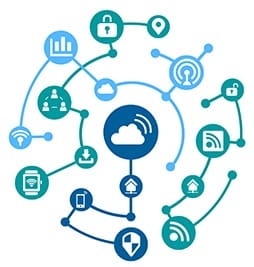Fog Computing: When the Cloud is Not Enough
How Do We Manage the Massive Amounts of Data Generated by the IoT?
The Internet of Things (IoT) market and its exponential growth are bringing many improvements and considerable revenue to almost every conceivable vertical. Now that most industries have a handle on what the IoT is, the public is watching it benefit both consumers and businesses alike. The IoT is generating detailed insights into consumer behavior, thereby improving product design and functionality, and also, according to Cisco, accelerates response to events, which ultimately enhances safety, improves service levels and increases output.
However, the IoT also creates a lot of technology challenges, especially given the prevalence of cloud computing. While the IoT is generating mass amounts of data that need to be analyzed instantaneously, systems in the cloud are not designed to handle the level of demand. Here’s where fog computing comes in.
Essentially, fog computing (sometimes referred to as edge computing) is a new approach to the cloud given the demands of the IoT, focused on using “fog nodes” to extend the cloud closer to internet-connected devices that produce and take action on data. Fog nodes can be deployed for any device with storage, computing, and a network connection, such as switches, industrial controllers, or video surveillance cameras.
Functions of Fog Computing, as listed by Cisco:
- Analyzes time-sensitive data at the network edge, close to its source, rather transmitting large amounts of IoT data to the cloud.
- Acts on IoT data almost instantly, according to policy.
- Sends specific data to the cloud for longer-term storage and historical analysis.
Fog Computing Objectives: What Will It Accomplish?
According to Cisco, billions of connected devices are generating more than two exabytes of data daily. It is clear that the cloud models of today aren’t designed for the demands of IoT-generated data, based on sheer volume alone. So, what kinds of technology benefits will fog computing enable for analyzing and acting on IoT data?
- Improved business agility—fog applications can be developed and deployed quickly, and are able to program machines to operate as needed.
- Enhanced security—the same physical and cybersecurity tools used for other aspects of IT can be used for fog nodes.
- More profound insights with privacy controls—analyzing data locally rather than in the cloud allows IT teams to monitor and control devices.
- Reduced operating expense—network bandwidth is conserved by processing certain data locally, rather than in the cloud, which requires more resources.
Achieve Efficiency with Fog Computing, Manage Security With Digital Certificates
Fog computing is a viable solution for IoT use cases which demand the need to analyze data instantly. However, industries which commonly make use of many IoT devices must also consider ensuring security. As the rule goes, the more data that is generated, the more vulnerabilities; but with the right solution, such vulnerabilities can be managed.
As traditional IT systems widen to accept IoT devices, enterprises need the ability to protect their employees, clients and intellectual property. If a device is going to share data over a network, it should do so in a scalable, affordable, properly managed environment, with proven security technology. The proper implementation of digital certificates significantly improves end-user experience and the security posture of the enterprise through cryptographically-sound technology.
Most organizations do not have access to security professionals with the necessary expertise for managing digital certificates, and dealing with an IoT system is more than a full-time job on its own. Working with a proven cybersecurity partner is an ideal solution for businesses trying to optimize their IoT operations. Selecting a vendor with full experience in deploying digital certificates for IoT devices and overall sound cybersecurity expertise is key.
CSS is available to talk about the IoT-related security questions your IT organization has. Our PKI and digital certificates experts can work with you to identify your current security vulnerabilities and identify the best approach for your IoT system.
If your security organization would like to learn more about how trusted digital certificates can safeguard your sensitive IoT data, our experts are here for you. Contact us to talk about your needs.


